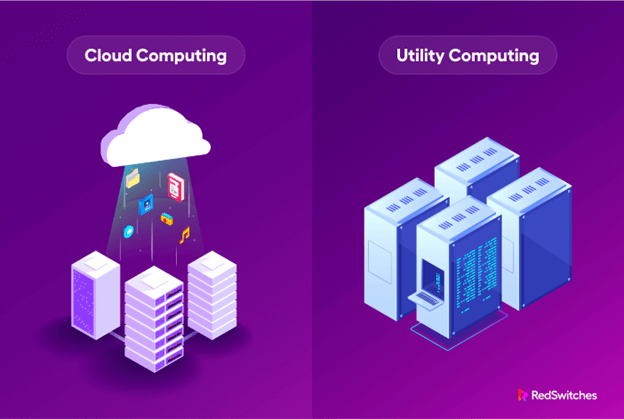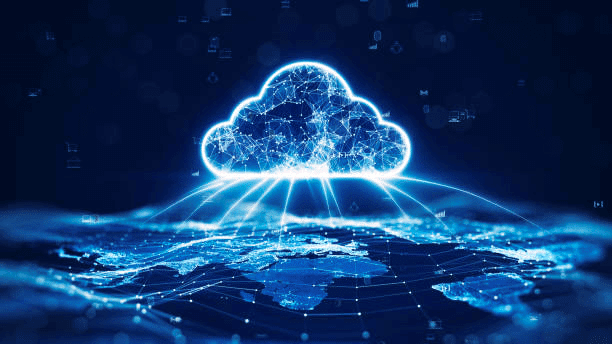Did you know cloud and utility computing demand is rising? In fact, the projected growth rate is at 25% leading to 2025. As businesses continue to rely on technology to drive their operations, efficient computing resources are paramount. Two paradigms often emerge in this context—cloud computing vs. utility computing. So, which one is right for your business?
Cloud computing and utility computing are often confused yet have distinct features and implications for businesses. Cloud computing offers the flexibility and scalability of accessing computing resources over the Internet. Utility computing treats computing resources as a utility, where companies pay for what they use. With both paradigms gaining traction in the modern IT landscape, understanding their similarities and differences is crucial.
This article discusses the critical difference between cloud computing and utility computing. We explore each model’s benefits and use cases and dive into the specific services offered by each paradigm. Whether you’re a business owner or an IT professional, this article provides the insights you need to make informed decisions.
Table of Content
- What is Cloud Computing?
- Types of Cloud Computing
- What Is Utility Computing?
- Difference Between Utility Computing and Cloud Computing
- Key Takeaways
What Is Cloud Computing?
Cloud computing delivers computing resources through the internet. Some of these resources are servers, software, and much more.
The good thing about cloud computing is that it removes the need to buy on-premise infrastructure.
Cloud computing use case
There is a multitude of use cases of the cloud, and they are:
- Archiving and backup
- Recovery
- Networking
- Testing and development
- Big data analytics
Types of Cloud Computing
-
Public Cloud
They are cloud environments explicitly created for IT frameworks; the user doesn’t own them. The cloud becomes public when it is shared among several tenants. Popular examples are Google Cloud and AWS.
-
Private Cloud
They are cloud environments explicitly created for sole users. The cloud becomes private when the IT framework becomes allotted to a sole client and secured through a firewall. Popular examples are IBM Cloud and Cisco.
-
Hybrid cloud
They are IT frameworks built from a combination of private and public clouds. These two environments get interlinked through a LAN, VPN, or API. The cloud becomes hybrid when applications can move between different environments. Famous examples are IBM Cloud and Rackspace.
What Is Utility Computing?
Utility computing is a service provisioning model in cloud computing that transforms how businesses access and consume computing resources. It revolves around treating computing resources as a utility, similar to electricity or water. Businesses can access and use resources on-demand, paying for only their consumption.
It shifts the traditional approach of owning and managing physical IT infrastructure to a consumption-based model. Cloud service providers who own and operate the underlying infrastructure deliver utility computing. Then from there, companies can offer and oversee their resources through an API or self-service portal.
The best part about utility computing is you get agile and affordable technology. Not only that, companies can focus on their operations.
Utility Computing Benefits
There are a multitude of benefits you can get when you use utility computing. Here are the prominent ones:
- Cost-effective: The subscription payment method makes utility computing affordable, and here is why. Users can use cloud resources on demand and get billed for their consumption. It eliminates initial hardware investments, running costs, and much more.
- Scalability: The cloud can offer auto-adaptive scaling to businesses. The good thing is businesses can automate it. The nature of this auto-adaptive scaling feature lets companies scale their infrastructure without hiccups.
- Global Accessibility: Businesses can access computing resources with utility computing from any location with a connection to the internet. This global accessibility enables businesses to expand operations without needing physical infrastructure in multiple locations. It increases market reach and potential for business growth.
- Enhanced Security and Compliance: Utility computing providers typically implement robust security measures and compliance protocols to safeguard data and protect against cyber threats. It ensures businesses benefit from data encryption, identity, access management, and regular security updates. It helps to safeguard their critical business data and meet regulatory compliance requirements.
Leveraging utility computing helps businesses optimize their IT resources, drive innovation, and stay competitive in the modern digital landscape.
Difference Between Utility Computing and Cloud Computing
Here is the difference between cloud computing and utility computing in tabular form.
| Feature | Cloud Computing | Utility Computing |
| Cost Model | Users pay for the resources they consume through a subscription method. | It follows a consumption-based pricing model, where users get billed based on their consumption. |
| Flexibility | Cloud computing offers flexibility in resource allocation, platform choices, and deployment options. It allows users to choose from various cloud services and providers. | Users have agility in how they can access and use the resources. It eliminates initial hardware investments, running costs, and much more. |
| Resource Ownership, | The cloud service provider owns and manages the infrastructure, data centers, servers, and networking. equipment. | It’s agile, and the good thing is that a user can scale the resources on demand. It reduces the need for keep requesting the service provider add more resources. This approach can help businesses scale their operations and thrive. |
| Reliability | It typically offers high reliability and availability through redundant data centers and SLAs provided by the cloud service provider. | Reliability depends on the infrastructure and systems owned and managed by the businesses. |
| Scalability | It provides on-demand scalability, allowing businesses to quickly scale up or down based on their needs. | It offers scalability based on actual usage, allowing businesses to scale resources dynamically based on their consumption requirements. |
| Examples | ● IBM Cloud
● GCP ● AWS |
● IBM Utility Computing
● Oracle Utility Computing |
It’s important to note that there are similarities between cloud computing vs. utility computing. In addition, utility computing is a subset of cloud computing. You can also consider utility computing as a specific approach within the broader concept of cloud computing.
Also Read: 6 Key Differences: Cloud vs On Premise Computing Revealed!
Key Takeaways
- Cloud computing and utility computing are different models for delivering computing resources to businesses.
- Cloud computing involves accessing resources online, typically through a third-party provider. It allows for scalability, flexibility, and cost-efficiency.
- Utility computing refers to treating computing resources as a utility, similar to electricity or water. Businesses only pay for what they use.
- Cloud computing offers a broader range of services, including IaaS, PaaS, and SaaS. Utility computing primarily focuses on delivering IaaS.
- Both cloud computing and utility computing have their advantages and disadvantages. Businesses must weigh their specific needs and requirements before choosing between them.
- The future of utility computing vs. cloud computing is likely to continue evolving. Technological advancements and changing business needs drive innovation in both computing models.
Would you like to learn more about cloud computing vs. utility computing? Check out our resources section for valuable insights, case studies, and expert opinions.


